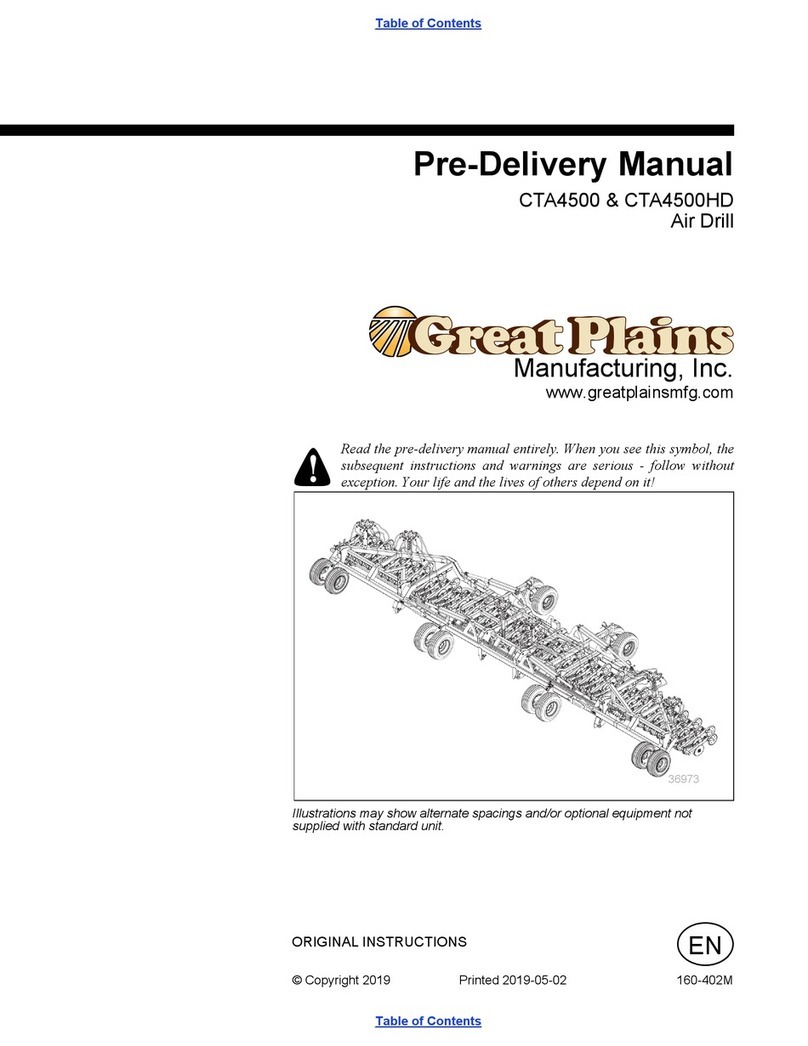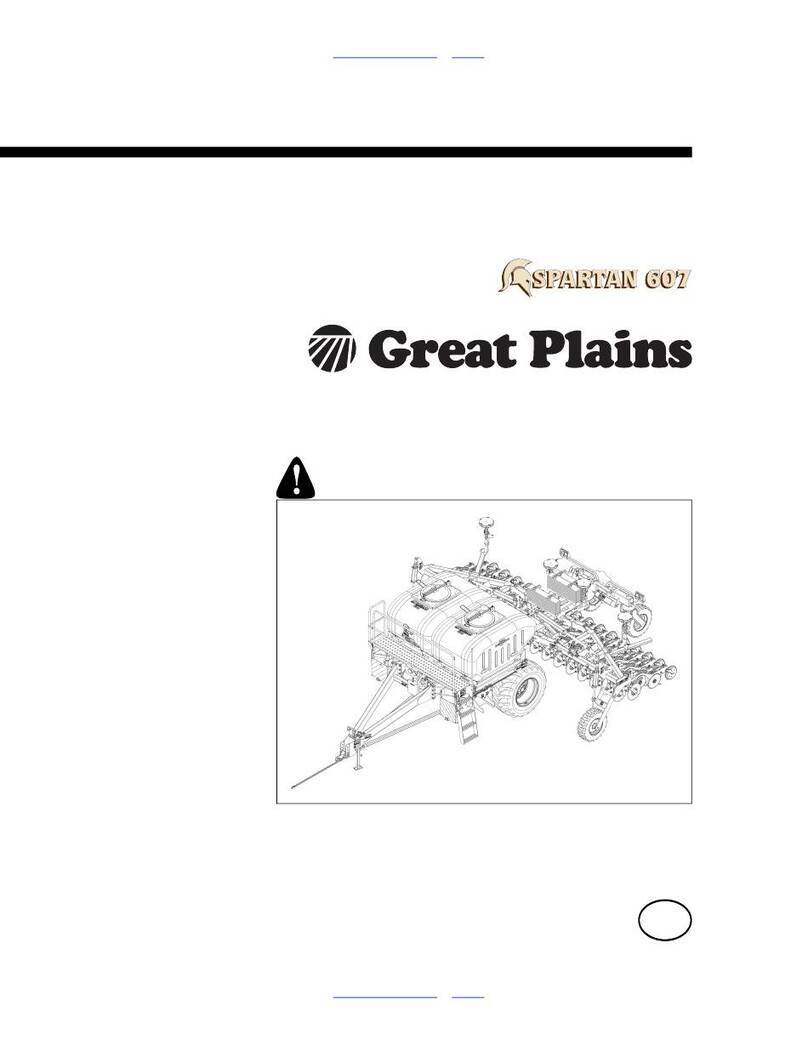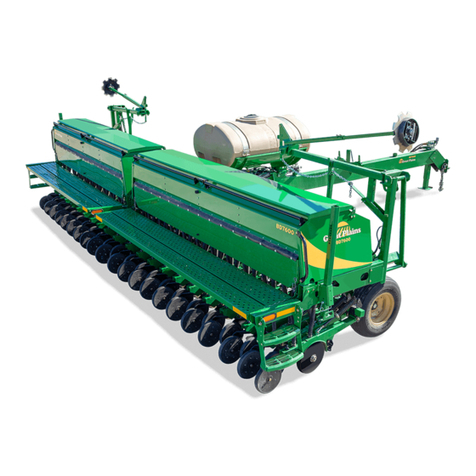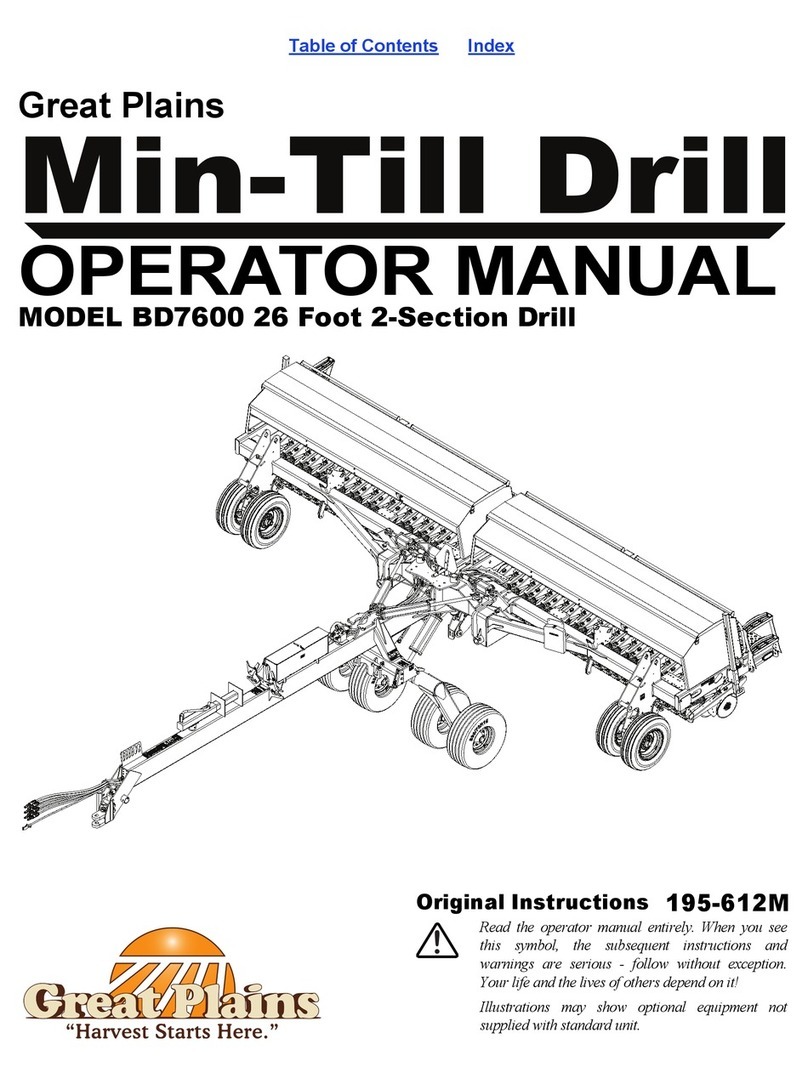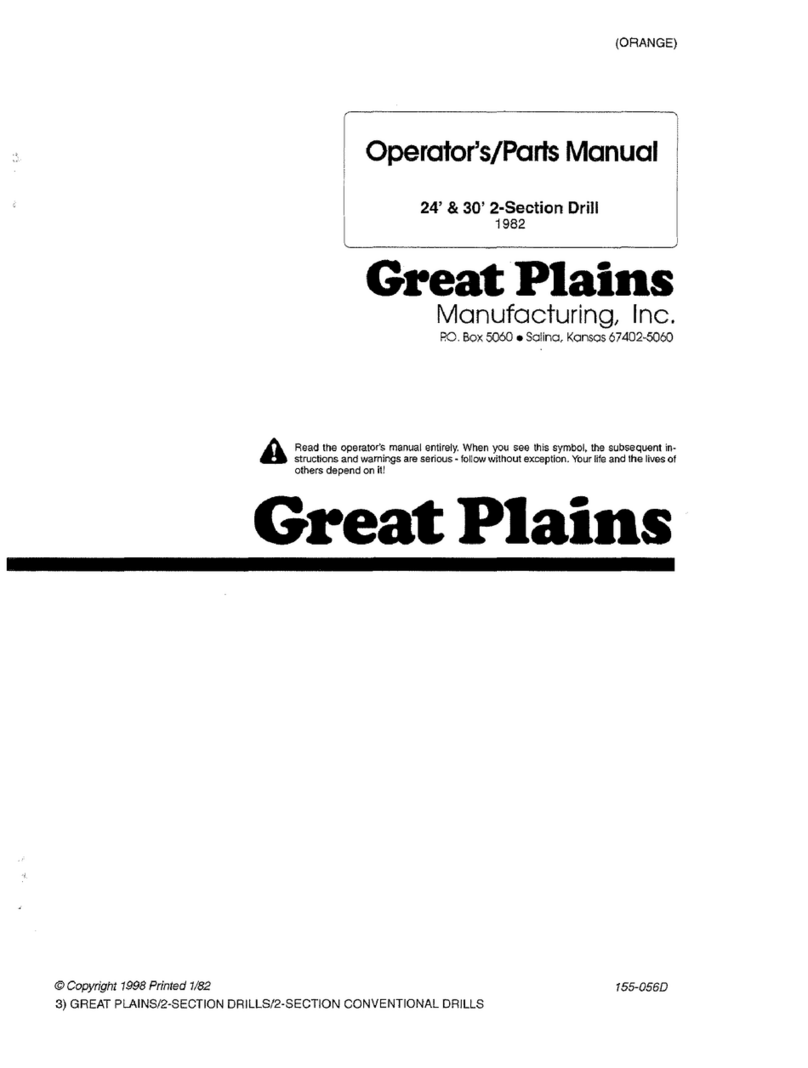
2N-2420 and 2N-3020 Cover Index Table of Contents iii
4/30/19 Cover Index 196-164M-A
© Copyright 1999, 2005, 2008, 2015, 2016, 2017, 2019. All rights Reserved
Great Plains Manufacturing, Inc. provides this publication “as is” without warranty of any kind, either expressed or implied. While every precaution has been
taken in the preparation of this manual, Great Plains Manufacturing, Inc. assumes no responsibility for errors or omissions. Neither is any liability assumed
for damages resulting from the use of the information contained herein. Great Plains Manufacturing, Inc. reserves the right to revise and improve its products
as it sees fit. This publication describes the state of this product at the time of its publication, and may not reflect the product in the future.
Trademarks of Great Plains Manufacturing, Inc. include: AccuShot, Max-Chisel, Row-Pro,
Singulator Plus, Short Disk, Swath Command, Terra-Tine, Ultra-Chisel, and X-Press.
Registered Trademarks of Great Plains Manufacturing, Inc. include: Air-Pro, Clear-Shot, Discovator, Great Plains, Land Pride, MeterCone,
Nutri-Pro, Seed-Lok, Solid Stand, Terra-Guard, Turbo-Chisel, Turbo-Chopper, Turbo-Max, Turbo-Till, Ultra-Till, Whirlfilter, and Yield-Pro.
Brand and Product Names that appear and are owned by others are trademarks of their respective owners.
Printed in the United States of America
Table of Contents
Important Safety Information.................................................1
Safety Decals ....................................................................6
Introduction...........................................................................11
Description of Unit ...........................................................11
Intended Usage ........................................................11
Models Covered .......................................................11
Document Family .....................................................11
Using This Manual....................................................11
Definitions.................................................................11
Owner Assistance............................................................12
Further Assistance...........................................................12
Preparation and Setup .........................................................13
Hitch Height Adjustment ..................................................13
Installing Drill Control Console ........................................14
Bleeding Hydraulic Systems............................................14
Field-Lift Hydraulics..................................................14
Transport-Lock Hydraulics .......................................15
Raise-To-Fold Hydraulics.........................................15
Fold Hydraulics.........................................................16
Marker Hydraulics ....................................................17
Frame Leveling Adjustment.............................................18
Aligning Boxes..........................................................19
Operating Instructions .........................................................21
Pre-start Checklist ...........................................................21
Tractor Requirements...............................................21
Recommended Minimum Tractor Size 21
Minimum Towing Vehicle Weight .............................21
Hydraulics.................................................................21
Safety Lights.............................................................21
Hitching Tractor to Drill....................................................22
Operating Control Console ..............................................23
Folding the Drill................................................................23
Folding Harrow Attachment......................................23
Unfolding the Drill ............................................................24
Lifting the Drill in the Field........................................24
Field Operations .......................................................24
Opener Operation.....................................................24
Marker Operation .....................................................25
Shaft Monitor Operation 25
Electric Clutch Operation 25
Transporting ....................................................................25
Parking ............................................................................26
Adjustments.....................................................................27
No-Till Seeding ................................................................27
Coulter Adjustments ........................................................27
Hydraulic Depth Control ...........................................28
Weights 28
Weight Chart, 24-Foot Drill.......................................29
Weight Chart, 30-Foot Drill.......................................29
Coulter Springs ........................................................29
Coulter Down-Pressure Chart ..................................29
Individual Coulters....................................................30
Pull Cable Adjustments ...................................................31
Opener Adjustments........................................................32
Planting Depth of Openers.......................................32
Down-Pressure Springs ...........................................32
Press Wheels ...........................................................33
Setting the Seeding Rate ................................................33
Small Seeds Attachment..........................................35
Acremeter Operation .......................................................36
Gauge-Wheel Drive Adjustment......................................36
Seed Rate Charts (Pounds per Acre)..............................37
Small Seeds Attachment Seed Rate Charts (Pounds per
Acre)) ................................................................................................... 41
Disc Scraper Adjustment.................................................42
Leveling Adjustment ........................................................42
Marker Adjustments .................................................42
Marker Chain 42
Disc Adjustment ..............................................................43
Folding Speed .................................................................44
Coulter Tines ...................................................................45
Seed-Lok .........................................................................45
Troubleshooting ...................................................................46
Maintenance and Lubrication..............................................48
General Maintenance ......................................................48
Storage............................................................................48
Lubrication ............................................................................49
Options ..................................................................................53
Coulter Tines ...................................................................53
Weight Brackets ..............................................................53
Markers ...........................................................................54
Small Seeds Attachment .................................................54
Electric Clutches..............................................................55
Shaft Monitors .................................................................55
Rear Mount Boom ...........................................................55
Seed Box Agitator ...........................................................56
Seed-Lok Firming Wheels...............................................56
Seed-Cup Plugs ..............................................................56
Hitch Options............................................................56
Appendix A - Reference Information ..................................57


